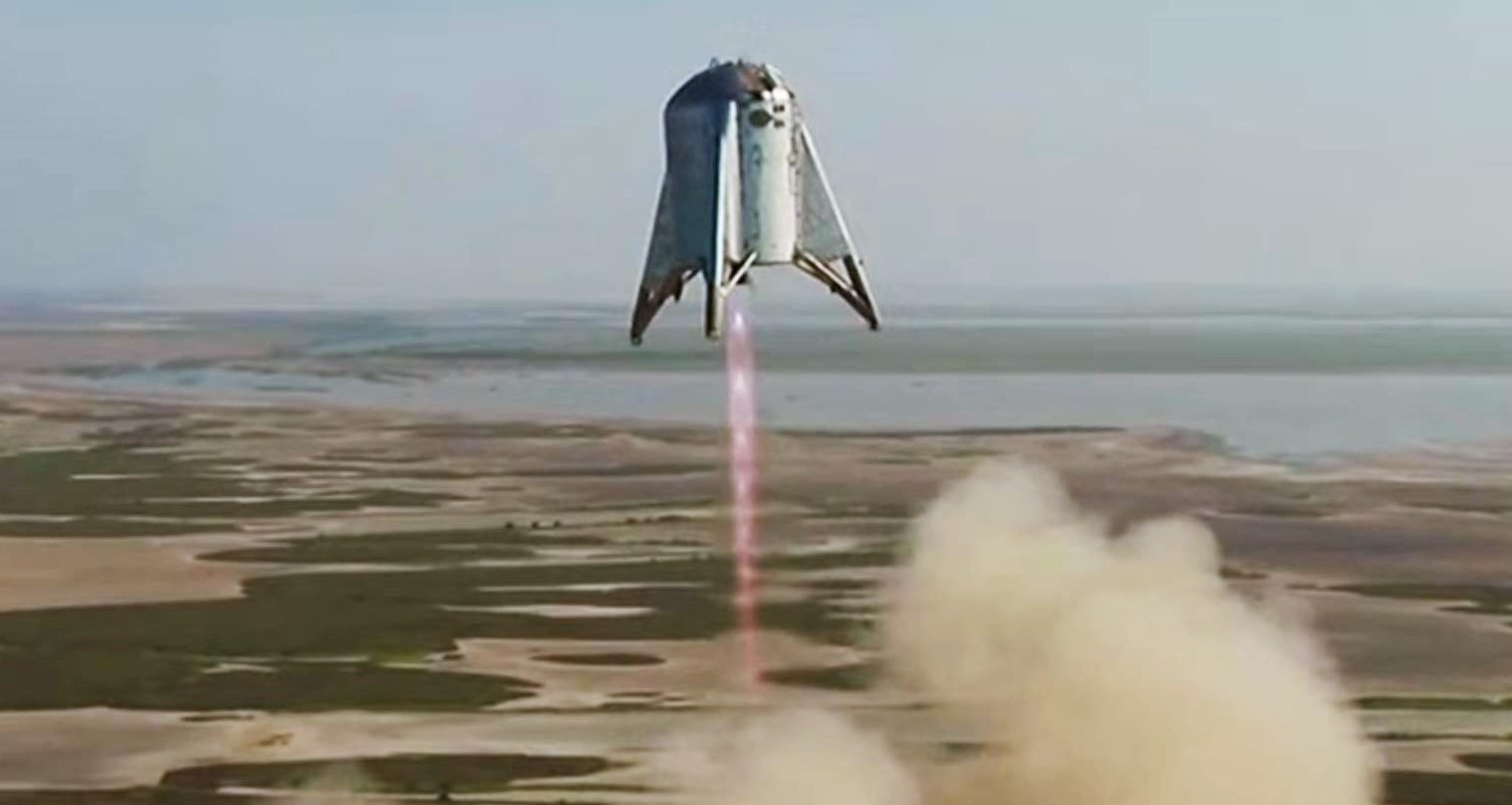Yesterday (Tuesday, Aug. 26th), SpaceX conducted the second untethered test of its Starship Hopper – and nailed it! For this test, the prototype test vehicle took off from the Boca Chica test facility, ascended to an altitude of 150 m (~500 ft) and then landed again safely. This comes just a month after the first successful hop test and brings the company one step closer to tests using their full-scale prototype.
The entire event was live-streamed by SpaceX and countless spaceflight enthusiasts on social media. While the second hop test was originally scheduled to take place on Monday, Aug. 25th, the flight was scrubbed mere milliseconds before the Raptor main engine ignited. According to Musk, this was due to a wiring/connector issue with the engines torch igniters.
“Raptor uses dual redundant torch igniters,” he tweeted. “Better long-term, but more finicky in development.” He also stated that once they were inspected, they would “try again tomorrow same time.”
True to his word, the ground crews at Boca Chica made their second attempt on Tuesday, Aug. 27th, at 05:00 PM local time (03:00 PST; 06:00 EST). As you can see from the video below, the test went off without a hitch, despite the presence of high winds around the test site.
The flight lasted almost a full minute and saw the Hopper reach an altitude of 150 meters, move laterally, and then set down at a second landing pad nearby. This flight ceiling was consistent with the revised permit issued by the FAA that specified that “SpaceX may operate the Starship Hopper Vehicle for one flight without further FAA authorization, to a nominal altitude of 150 meters AGL or less.”
Originally, Musk was hoping to build on the 20 m hop test by flying the Hopper to a ceiling of 200 m (~650 ft). This may or may not have been in response to concerns raised by the local authorities about possible damage in the event of a malfunction.
These concerns led to the Cameron County Sheriff’s department telling residents of the nearby Boca Chica village to leave their homes for the duration of the test flight. Not the area, mind you, but their homes, for fear that a mishap could cause an overpressure event that would result in all the windows shattering in the area.
Concerns for public safety may be why SpaceX had increased its liability insurance exponentially, from $3 million to $100 million. It also may be related to the fact that during the previous test, the engine burn resulted in a small brush fire, which the ground crews were unable to fully quell on their own, prompting them to ask for the assistance of the local fire department.
That test, which took place on July 25th, consisted of the Hopper flying to an altitude of 20 meters (~65 feet) and diverting laterally before making a powered descent and landing. This successful test also occurred after a brief delay, this one caused by a fire (similar to one that happened about a week before during a static fire test) that began shortly after engine ignition.
Whereas the previous test was largely obscured by smoke and flames when observed from the ground, the Hopper was able to ascend high enough this time around that the vehicle and the Raptor’s beautiful, multicolored flame trail was visible for all to see. The flight was even more spectacular when viewed from above, thanks to the drone SpaceX had on-site to capture footage of the test.
Elon congratulated the SpaceX team via twitter about a half-hour after the successful test. He was also sure to add a picture of the Hopper ascending above what looks like a Martian surface, with the caption “
This all brings SpaceX one step closer to conducting flight tests using their two orbital-class Starship prototypes – the Starship Mk. 1 and Mk. 2 – which are finishing being assembled at the company’s facilities in Boca Chica and Cape Canaveral, Florida. Based on previous statements made by Musk, these prototypes could be ready to conduct suborbital test flights any day now.
Timetables are always tricky when dealing with spaceflight and space exploration, and progress is always incremental. But the strides SpaceX has taken in recent months are nothing if not impressive and certainly very encouraging. At this rate, we could very well be seeing commercial missions to the Moon and Mars during the next decade.
Further Reading: Teslarati, SpaceFlight Now

